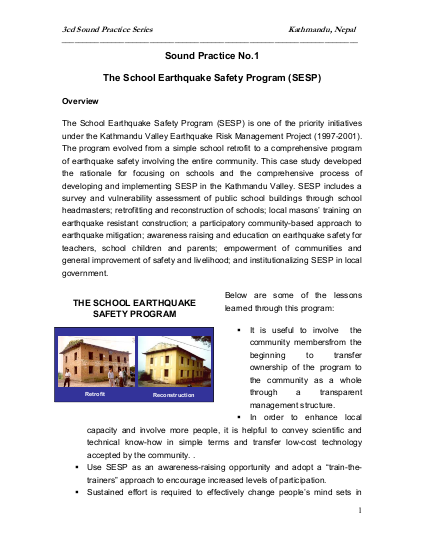
The School Earthquake Safety Program (SESP) is one of the priority initiatives under the Kathmandu Valley Earthquake Risk Management Project (1997-2001). The program evolved from a simple school retrofit to a comprehensive program of earthquake safety involving the entire community. This case study developed the rationale for focusing on schools and the comprehensive process of developing and implementing SESP in the Kathmandu Valley. SESP includes a survey and vulnerability assessment of public school buildings through school headmasters; retrofitting and reconstruction of schools; local masons’ training on earthquake resistant construction; a participatory community-based approach to earthquake mitigation; awareness raising and education on earthquake safety for teachers, school children and parents; empowerment of communities and general improvement of safety and livelihood; and institutionalizing SESP in local government.
Resource collections
- Earthquakes
- Learning from crises
- UN Habitat - Urban Response Collection
- Urban Response - Urban Crisis Preparedness and Risk Reduction
- Urban Response Collection - Community Engagement and Social Cohesion
- Urban Response Collection - Economic Recovery
- Urban Response Collection - Environment and Climate Change
- Urban Response Collection - Housing, Land and Property
- Urban Response Collection - Urban Crisis Response, Recovery and Reconstruction
- Urban Response Collection - Urban Resilience